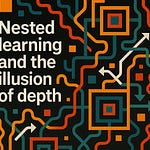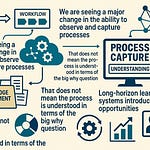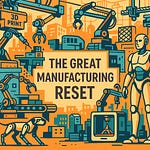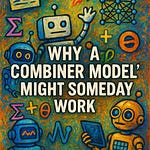Considering this topic really involved taking things in two different directions. First, I started to really try to understand the world and landscape of machine learning patents. Second, it became abundantly clear that acquisitions have fueled a lot of change in the machine learning space. A history of machine learning acquisitions could be a topic one day. That will probably happen in week 78. Some of that acquisition has been about bringing talent to internal teams and some of it has been about patent acquisition [1]. After those two considerations bubbled up to the forefront of my thoughts I also started to wonder about patenting ML models compared to patenting the underlying technology. You can very quickly go out and find out that last year the United States Patent and Trademark Office’s (USPTO) released a new artificial intelligence patent dataset [2].
That gigabyte sized dataset download included 13.2 million patents and pre-grants that you can study on the topic of artificial intelligence [3]. The actual download speed to get that file was exceedingly slow and even with my gigabit internet connection took over 20 minutes. While I was waiting to review the actual data I tried to read the linked journal article about the dataset from Giczy, A.V., Pairolero, N.A. & Toole, A.A. Identifying artificial intelligence (AI) invention: a novel AI patent dataset. The Journal of Technology Transfer (2021) [4]. That article is behind a Springer paywall and costs $39.95 which is a little wild for access to a full PDF of an article. However, it was much easier and surprisingly informative to just watch a narrated PowerPoint presentation from Nicholas A. Pairolero from June 25, 2021 that was presented at the AI and Patents Workshop at ICAIL 2021 [5].
Let’s pivot back to understanding the landscape of machine learning patents. You will very quickly find out that the team over at Google is proudly displaying a patent from December 1, 2005 about machine learning systems and methods [6]. The patent in PDF format is 17 pages long and a pretty easy read. Pivoting from that patent I started to wonder about who is getting patents now and if that really matters anymore in the machine learning space [7]. I learned during that research that it might be fun to work with a website called Patent Guru (patentguru.com) to visualize frequency [8]. I pretty quickly hit the limits of what free access to that website using the analysis features would provide and ended up circling back to the dataset I downloaded. During the course of getting that dataset loaded up I started to consider the idea of patenting AI algorithms and even the future consideration of if an AI built for drug discovery could own the patent or resulting intellectual property from that discovery.
Links and thoughts:
“Identifying Artificial Intelligence Invention: A Novel AI Patent Dataset (AI & Patents 2021)”
Data Science Grandmaster Series from NVIDIA
https://www.youtube.com/playlist?list=PL5B692fm6--uXbxtmPJz5nu3Xmc1JUm3F
“tinyML Talks: Energy-Efficiency and Security for TinyML and EdgeAI: A Cross-Layer Approach”
“GPT-NeoX-20B - Open-Source huge language model by EleutherAI (Interview w/ co-founder Connor Leahy)”
“Getting Started with Sentiment Analysis using Python”
https://huggingface.co/blog/sentiment-analysis-python
“They Almost Got Away With It! - WAN Show February 04, 2022”
Top 5 Tweets of the week:







Footnotes:
[1] Sawers, P. (n.d.). 13 acquisitions highlight Big Tech’s AI talent grab in 2020. Venture Beat. Retrieved February 6, 2022, from https://venturebeat.com/2020/12/25/13-acquisitions-highlight-big-techs-ai-talent-grab-in-2020/
[2] USPTO releases new Artificial Intelligence Patent Dataset. USPTO. (n.d.). Retrieved February 6, 2022, from https://www.uspto.gov/about-us/news-updates/uspto-releases-new-artificial-intelligence-patent-dataset
[3] Artificial Intelligence Patent Dataset. USPTO. (n.d.). Retrieved February 6, 2022, from https://www.uspto.gov/ip-policy/economic-research/research-datasets/artificial-intelligence-patent-dataset
[4] Giczy, A.V., Pairolero, N.A. & Toole, A.A. Identifying artificial intelligence (AI) invention: a novel AI patent dataset. J Technol Transf (2021). https://doi.org/10.1007/s10961-021-09900-2
[5]
[6] https://patents.google.com/patent/US20050267850A1/en
[7] Obee, E. (2021, August 18). Artificial Intelligence Patent 101. Towards Data Science. Retrieved February 6, 2022, from https://towardsdatascience.com/artificial-intelligence-patent-101-3eebf93f5297
[8] "machine learning". PatentGuru. (n.d.). Retrieved February 6, 2022, from https://www.patentguru.com/analysis?area=US&q=%22machine+learning%22
What’s next for The Lindahl Letter?
Week 56: Comparative analysis of national AI strategies
Week 57: How would I compose an ML syllabus?
Week 58: Teaching or training machine learning skills
Week 59: Multimodal machine learning revisited
Week 60: General artificial intelligence
I’ll try to keep the what’s next list forward looking with at least five weeks of posts in planning or review. If you enjoyed reading this content, then please take a moment and share it with a friend.













